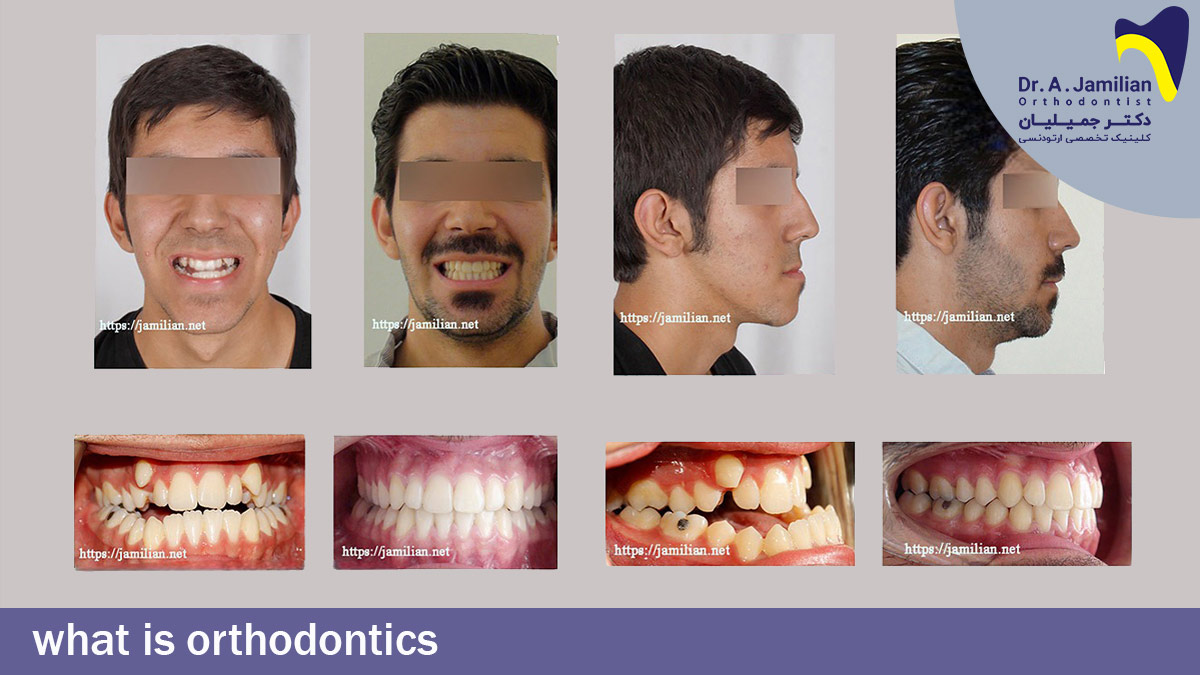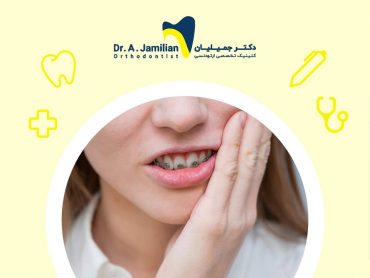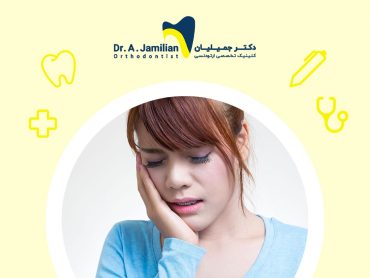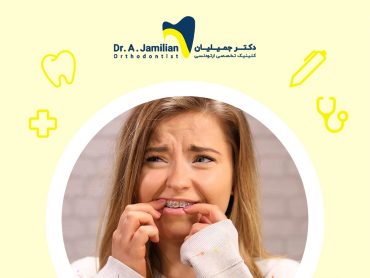Orthodontics is a branch of dentistry that corrects teeth and jaws that are in the wrong place. Improperly positioned teeth with an unusual shape can cause a variety of health problems. It becomes harder to keep your teeth clean. A patient with misaligned teeth is at risk for tooth decay and periodontal disease. This condition puts more pressure on the teeth and consequently leaves various complications in the long run.
Orthodontics is appropriate for patients with crooked teeth or jaw orthopedic issues. In addition to correcting misaligned teeth, an orthodontist can treat growing jaws. Orthodontics is painless because orthodontic devices move teeth and jaws at a very calculated and gentle speed, eliminating the severe pain of surgery for patients. Further, the process of correcting misaligned teeth does not damage the natural tooth enamel.
Complications of not Performing Orthodontics in Maxillofacial Malformations
If orthodontics is not performed for patients with maxillofacial malformations; various complications will occur for patients. These include tooth decay, gum problems, poor chewing of food, and digestive problems. TMJ headaches and pain in the neck, shoulders, and back are other complications of jaw and tooth abnormalities and lack of orthodontic treatment. Also, crooked and irregular teeth damage the beauty of the patient’s appearance.
The benefits of orthodontic treatment include a healthy mouth, a pleasant appearance, and teeth that are likely to last longer. A dentist in this field is known as an orthodontist.

Who is orthodontics suitable for?
Only an orthodontist can determine the necessity of orthodontics for you. Your orthodontist determines the necessity of orthodontics treatment by the help of diagnostic tools that includes a complete medical and dental history, a clinical examination, a plaster model of your teeth and special imaging. An orthodontist can decide if you need orthodontics or not. And this is an orthodontist who can propose a proper treatment plan for teeth problems.
Thanks to rapid advancements in dentofacial orthopedics science, almost all patients of any age with jaw and dental problems can benefit from orthodontic treatment. Remember that consulting an experienced orthodontist with current knowledge in this field is critical. Professor Jamilian can provide a free and accurate orthodontic consultation after examining the patient.
Types of Dental Problems that Need Orthodontic Treatment?
If you have one of the following conditions, you may be an orthodontic candidate.
- Overbite, when the upper teeth overlap on the lower teeth.
- Underbite, seemingly known as “bulldog”, in which the lower row teeth are placed far ahead of the upper teeth and the upper row is too far behind.
- Cross bite is an abnormality during which one or some of the upper teeth locate behind the lower l tooth.
- Open bite occurs when having space between two jaws in the front, back or lateral sides.
- Misplaced midline occurs when the midline of the upper teeth with the midline of the lower teeth is not matched in the same direction.
- Spacing between teeth, which may result from loss of a tooth, or a group of teeth.
- Dental crowding This problem occurs when there is space deficiency in the arch. This problem is due to extremely large teeth, small jaws, and a combination of both situations.

Orthodontic treatment with new and different solutions
Orthodontics is a dental specialty that focuses on correcting and aligning teeth and aligning jaws. Dr. Jamilian’s specialized clinic provides this treatment for people of all ages and individuals using modern orthodontic methods. Fixed orthodontics includes the same color braces as tooth (ceramic), or by the lingual system (placement of braces behind the teeth). Fixed orthodontic treatments can be done by Straight, Edgewise, Damon methods, straight wires such as Roth. MBTH and so on. Nowadays a new method introduced to orthodontics as an invisible method which is named Invisalign or clear aligner. Meanwhile, new techniques such as Mini screw could be used for treating teeth abnormalities and malocclusions.
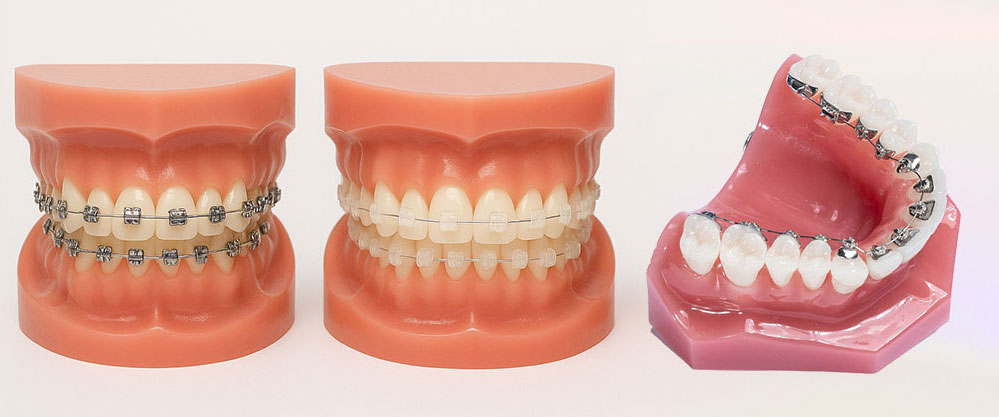
Fixed and removable orthodontics can both help change the position of the teeth and jaws. The orthodontic treatment procedure is as follows: The orthodontic appliance gently applies pressure to the teeth and jaw, which gradually creates the desired change over time. The orthodontist carefully plans and designs the speed and duration of orthodontic treatment to avoid damage to the teeth’s roots and to keep the patient comfortable and free of orthodontic complications. Feeling overwhelmed and uncomfortable during the first few days of orthodontic treatment is normal. A simple pain reliever will suffice to manage this condition. However, if you experience significant pain, be sure to consult your orthodontist.
The degree of deformity of the teeth, age and physiological characteristics of the patient determine which types of orthodontic should be selected for treatment. It is an orthodontist who by examining the patient’s condition determines and implements orthodontic treatment at any stage.

Objectives of Orthodontic Treatment
Orthodontics treatments are classified under 2 groups: one of the two orthodontics treatments is for correcting teeth and the other group is for treating jaw malocclusions. Each of which requires a specific appliance for treatment of malocclusions. If a patient with dentofacial malocclusion goes to orthodontics at the appropriate time and cooperates with them during the course of treatment, their problems will be treated easily by orthodontics. However, if the patient is late for treatment and does not cooperate or has severe malocclusion, jaw surgery might be necessary for fixing the jaw problem. In these cases, the patient will be treated using surgery after performing the orthodontics treatment.
Before and after orthodontic treatments performed by Professor Jamilian
To see more orthodontic works, you can refer to the before and after orthodontic image gallery. In this section, you will see some of these portfolios. Depending on the deformity of the jaw and teeth, different orthodontic treatments are considered. Your illness may be similar to one of these. In this case, you can see the recovery after treatment in this area.

How Long Does Orthodontics Bracketing & Teeth Wiring Take?
Attaching orthodontic wires and brackets to teeth typically takes about 30 minutes. While applying brackets and wires is not painful, a local anesthetic is frequently used to ensure the patient’s comfort, particularly for children. Depending on the type of malocclusion, the patient may require removable orthodontics or fixed orthodontics or jaw surgery along with orthodontics. The type of malocclusion defines the type of orthodontic appliance.
A jaw problem typically takes 1.5 years to correct with appliances and another 1.5 years to straighten the teeth with braces or brackets. However, if the patient only has dental issues, orthodontic treatment will last 1.5 years.
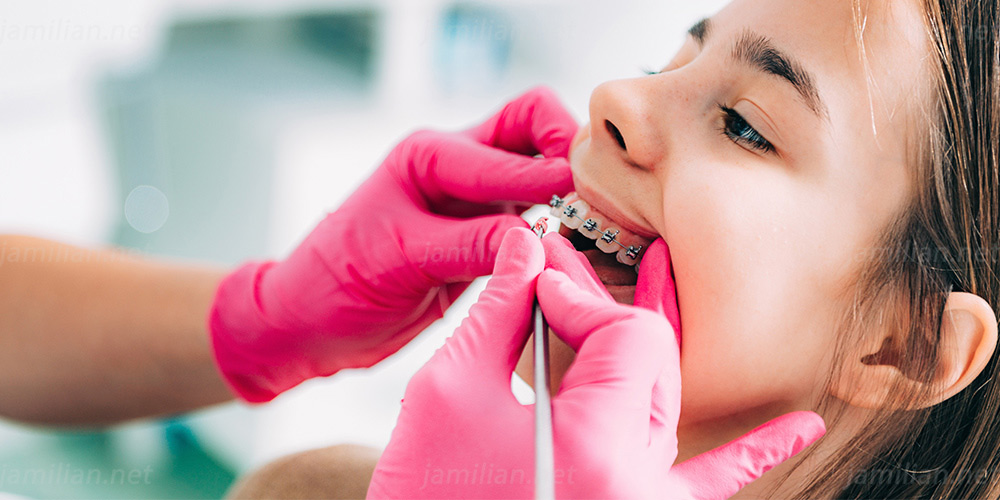
The Best Age for Orthodontics Treatment
It is recommended to pay a visit to an orthodontist upon noticing dental or jaw malocclusion in your child. Visiting an orthodontist in time provides you with enough time to be prepared for a carefully planned orthodontics treatment. The best time for the orthodontics treatment is at age 8 and before the onset of puberty. However, this does not mean that people who are older than 14 or 18 or younger than 8 years old cannot benefit from orthodontics treatment. Although, people younger than 8 years old should only have orthodontic treatment if there are dental or jaw malocclusions. The orthodontics treatment in adults may take slightly longer than treatment in children. However, they will finally achieve a favorable result.
Patients who tend to be older often prefer to use invisible or tooth-colored braces. This is especially true for working patients requiring increased verbal and face-to-face communication. Furthermore, older people often prefer to use removable braces, which delay and prolong the orthodontic treatment period.
Orthodontist FAQ
During treatment you should steer clear of corn and junk food, colored, and hard food. It’s recommended to consume foods filled with calcium, minerals, and vitamins. Drinking cold beverages could be helpful during this period.
In this case, call your orthodontist and make an emergency appointment. Being reckless as in this example, can disrupt your course of treatment.
For cleaning fixed orthodontics brackets use a special orthodontics brush. Using a higher amount of chlorhexidine mouthwash than recommended during this period could lead to yellow teeth. Therefore, use appropriate amounts of mouthwash during orthodontics treatment to prevent yellow teeth.
The first few days, you may develop a slight lisp, however, after a few days, you become more used to the brackets and being pronouncing words correctly. This problem may last longer in lingual orthodontics.
The time between visits varies depending on the type and stage of treatment. it depends on the orthodontist’s opinion. However, on average it could range from 2 weeks to 2 months. Orthodontist reminds patients for the next session after each appointment.
The cost of orthodontic treatment with fixed and removable braces varies. For an estimate, please get in touch with the clinic. Treatment costs may fluctuate throughout the year due to variations in materials used. As a result, the exact cost of orthodontic treatment is determined after the patient is examined.
Fixed orthodontics will undoubtedly provide faster and more effective results. You can use removable orthodontics if your social restrictions prevent you from using fixed orthodontics. Removable orthodontics are also recommended for jaw deformities.
Invisible orthodontics offers the advantage of higher patient confidence and removes social anxiety. However, it’s important to note that traditional metal orthodontics or brackets are generally more durable than invisible orthodontics. In particular, invisible lingual orthodontics are more likely to be damaged and broken due to the increased pressure and force applied to the back of the teeth. Further, the treatment duration for invisible lingual braces tends to be longer than the standard brackets placed on the front of the teeth.
Installing fixed braces is not painful. You may feel uncomfortable for a few days after putting on the braces, and you can control the pain and discomfort with simple pain relievers like ibuprofen. Other types of orthodontics are also painless because the teeth move very slowly during the treatment. If you are experiencing abnormal and severe pain that cannot be relieved with pain relievers, be sure to contact your orthodontist.
Orthodontics with fixed orthodontics and fixed braces takes around 1.5 years. Jaw orthodontics with removable appliances and mini-screws, as well as other orthodontic treatment methods, will take one year or more.
Fixed orthodontics uses only brackets and wires. However, invisible, removable orthodontics, also known as Invisalign, uses clear aligners to treat misaligned teeth.
Of course, teeth that have received complete and thorough orthodontic treatment will not revert to their former state. Make sure to wear the retainer all the time to avoid any minor changes in the position of your teeth.
Some supplementary insurance plans cover orthodontic treatment through contracts with Professor Jamilian’s clinic. Please contact your insurance broker to find out more about your contract. We have contracts with several insurance companies, including Bank Mellat, Bank Sepah, Bank Tejarat, and Bank Keshavarzi, among others.
